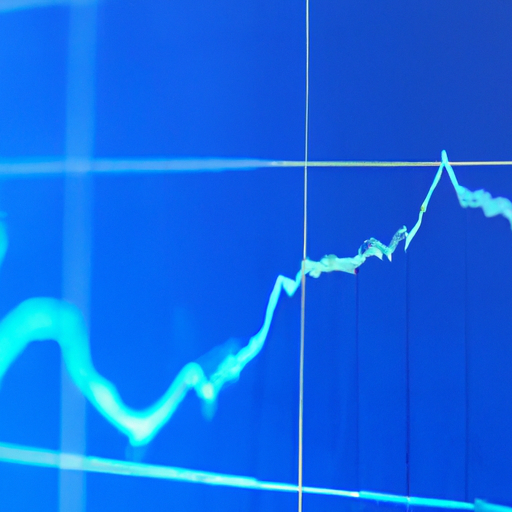Order Flow Analysis
Understanding order flow analysis in trading
Order flow analysis is a game-changer in the trading world, offering invaluable insights into market dynamics.
Whether you’re a seasoned trader or just starting out, grasping this concept can significantly improve your trading strategies.
In this article, we’ll delve deep into what order flow analysis is, why it’s important, and how you can use it to enhance your trading performance.
What is order flow analysis?
Order flow analysis involves examining the buy and sell orders in the market to understand the intentions of market participants.
Unlike traditional technical analysis, which relies on historical price data and indicators, order flow provides real-time information about market sentiment.
By analyzing order flow, traders can identify potential price movements before they happen.
For instance, if you see a large number of buy orders coming in at a particular price level, it’s likely that the price will rise as demand increases.
Conversely, a surge in sell orders could indicate an impending drop in prices.
The mechanics of order flow
The core of order flow analysis lies in understanding how orders are executed in the market.
There are two main types of orders: market orders and limit orders.
Market orders are executed immediately at the current market price.
Limit orders, on the other hand, are placed at a specific price level and are only executed when the market reaches that level.
When you analyze order flow, you’re essentially looking at the depth of the market—the number of buy and sell orders at various price levels.
This information helps you gauge supply and demand dynamics and predict future price movements more accurately.
Why is order flow analysis important?
Order flow analysis provides several advantages that can enhance your trading strategies:
Real-time market insights
One of the biggest benefits is gaining real-time insights into market sentiment.
While technical indicators often lag behind actual price movements, order flow gives you up-to-the-minute data on buying and selling pressure.
This allows for quicker decision-making and more timely trades.
Enhanced risk management
Understanding where large buy or sell orders are clustered helps you set better stop-loss levels.
You can place your stops just beyond significant support or resistance levels identified through order flow data.
This minimizes risk while maximizing potential gains.
Identifying market trends early
By observing shifts in buying or selling pressure, you can spot emerging trends before they become apparent through traditional technical analysis methods.
This early identification allows you to enter trades at more favorable prices and ride trends for longer periods.
How to implement order flow analysis in your trading strategy
Integrating order flow analysis into your existing trading strategy doesn’t have to be complicated. Here’s how you can get started:
Use advanced trading platforms
Many modern trading platforms offer tools specifically designed for order flow analysis.
Look for features like depth-of-market (dom) displays or volume profile charts that provide detailed views of buy and sell orders at different price levels.
These tools make it easier to visualize order flow data and incorporate it into your decision-making process.
Combine with other indicators
While order flow analysis is powerful on its own, combining it with other indicators can provide even more robust insights.
For example, you might use moving averages to confirm trends identified through order flow data, or bollinger bands to assess volatility alongside shifts in buying or selling pressure.
The key is finding complementary tools that enhance your overall strategy without overwhelming you with too much information.
Practice and refine your approach
As with any new technique, practice makes perfect.
Start by incorporating small elements of order flow analysis into your existing trades and gradually build up as you become more comfortable interpreting this type of data.
Over time, you’ll develop a keener sense for reading market sentiment through order flows, leading to more informed—and profitable—trades.
Common challenges and how to overcome them
Like any analytical method, order flow has its challenges.
Here are some common obstacles traders face and tips for overcoming them:
Noisy data
The sheer volume of data involved in order flows can be overwhelming.
To avoid getting bogged down by noise, focus on significant clusters of buy or sell orders rather than individual transactions.
Look for patterns over time rather than reacting impulsively to every new piece of information.
Lack of historical context
Since order flows provide real-time insights but lack historical context compared with traditional technical indicators,
It’s essential not to rely solely on this method when making decisions about long-term investments.
Instead combine real-time observations from current markets alongside historical trends gleaned from other forms technical analyses ensuring well-rounded comprehensive outlooks before executing trades
The future of trading: embracing technology and innovation
As technology continues advancing rapidly within financial sectors globally so too does our ability harness these innovations streamline improve efficiencies across all aspects industry including areas such high-frequency automated systems risk management practices alike
By staying ahead curve embracing latest developments traders stand better chances achieving consistent success navigating increasingly complex markets
Ultimately mastering art effectively utilizing sophisticated techniques such as order-flow-analysis represents crucial step towards becoming truly proficient trader capable thriving amidst ever-evolving landscape modern finance
So why wait? Start exploring world today see firsthand difference implementing advanced methodologies bring next trade journey
Happy trading!










